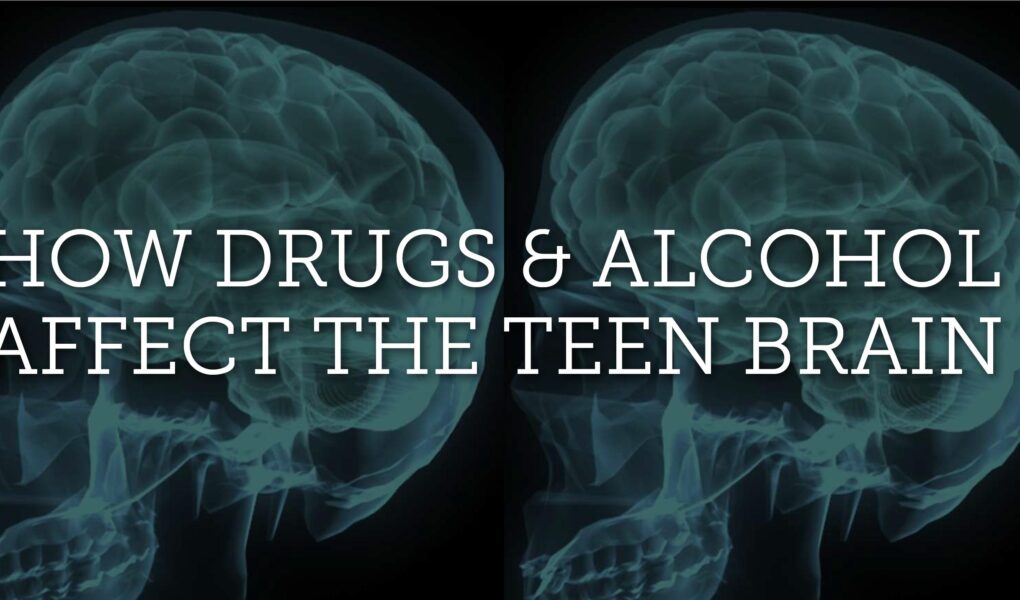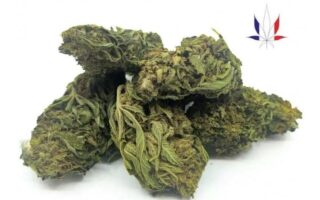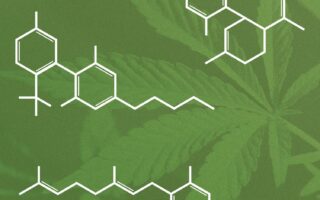Title: Unlocking the Mind: The Impact of Drugs on the Teenage Brain
As the teenage years unfold, they are marked by exploration, growth, and a quest for identity. This transformative period of life is characterized by a remarkable evolution of the brain—a neural tapestry weaving together emotion, decision-making, and the budding sense of self. However, this critical stage of development also renders adolescents particularly vulnerable to external influences, including the consumption of drugs. The allure of substance use can stem from curiosity, peer pressure, or a desire for escapism, yet the consequences can be profound and far-reaching. In this article, we delve into the intricate ways drugs interact with the still-developing teenage brain, exploring both the immediate effects and long-term ramifications. By understanding this complex relationship, we can better inform and empower young individuals as they navigate these pivotal years.
Table of Contents
- Understanding the Teenage Brain and Its Vulnerability to Substances
- The Impact of Drugs on Cognitive Development and Emotional Regulation
- Exploring the Long-term Consequences of Substance Use in Adolescents
- Strategies for Parents and Educators to Foster Healthy Choices
- Q&A
- To Wrap It Up
Understanding the Teenage Brain and Its Vulnerability to Substances
The teenage brain is a remarkable and dynamic organ, undergoing significant changes that influence behavior, decision-making, and emotional responses. During adolescence, the brain’s prefrontal cortex, responsible for executive functions such as judgment and impulse control, is still maturing. In contrast, the limbic system, which governs emotions and rewards, develops more rapidly. This disparity can create a perfect storm where teenagers are drawn to risky behaviors, including substance use. The intense allure of novelty and peer influences can make them more susceptible to experimenting with drugs, with potentially devastating consequences.
Drugs can alter the delicate biochemical processes within a teenager’s developing brain. The introduction of substances such as alcohol, nicotine, or cannabis can interfere with neurotransmitter systems, leading to lasting changes in behavior and cognitive functions. The following points highlight the impact of drugs on a young brain:
- Reduced impulse control: Substances can impair judgment and increase reckless behavior.
- Memory impairment: Drugs can hinder the ability to form new memories or recall previously learned information.
- Emotional instability: Adolescents may experience heightened mood swings and anxiety.
- Addiction potential: The teenage brain is more prone to developing substance use disorders.
| Substance | Effect on Teenage Brain |
|---|---|
| Alcohol | Impairs decision-making and learning |
| Nicotine | Increases addiction risk and affects attention |
| Cannabis | Reduces motivation and alters perception |
| MDMA | Can lead to emotional dysregulation |
The Impact of Drugs on Cognitive Development and Emotional Regulation
The adolescent brain is a marvel of development, undergoing significant restructuring during the teenage years. This period coincides with heightened experimentation with drugs, which can dramatically alter cognitive functions and emotional responses. Substances like marijuana, alcohol, and stimulants can interfere with critical processes such as memory, attention, and decision-making. These changes may lead to a decline in academic performance and difficulty in grasping new concepts. The impulsive nature that often characterizes teenagers is exacerbated by drug use, further impairing their ability to make rational choices.
Moreover, the impact of drugs extends beyond cognition, deeply affecting emotional regulation. Teenagers often grapple with intense emotions, and drugs can distort their ability to manage feelings of stress, anxiety, and depression. The following effects can manifest as a result of drug use:
- Increased anxiety: Substances can heighten feelings of paranoia.
- Emotional numbness: Some drugs dull emotional responses, leading to difficulties in empathy.
- Risk of addiction: Emotional struggles can result in dependence on substances, creating a vicious cycle.
The table below summarizes some common substances and their specific impacts on cognitive and emotional health:
| Substance | Cognitive Effects | Emotional Effects |
|---|---|---|
| Marijuana | Impaired memory, reduced attention span | Heightened anxiety, emotional detachment |
| Alcohol | Slowed reaction time, poor decision-making | Increased aggression, depression |
| Stimulants | Heightened focus followed by crashes | Intense mood swings, irritability |
Exploring the Long-term Consequences of Substance Use in Adolescents
The adolescent brain is a landscape of rapid development and change, making it particularly vulnerable to the effects of substance use. This developmental stage is marked by a phase of heightened neuroplasticity, where the brain is actively forming and pruning synaptic connections. When substances such as alcohol, cannabis, or stimulants enter the adolescent system, they can disrupt this delicate balance, leading to long-term alterations in cognitive functions. Some specific consequences include:
- Impaired Learning: Substances can hinder the brain’s ability to encode new information, negatively impacting academic achievement.
- Increased Mental Health Risks: Use can elevate the likelihood of mental health disorders such as anxiety and depression.
- Cognitive Decline: Long-term use is linked to diminished executive function, including decision-making and impulse control.
The repercussions also extend beyond immediate cognitive effects, cascading into broader social and emotional domains. Adolescents using drugs may experience altered motivation and emotional regulation. This can lead to social withdrawal and increased risk-taking behaviors, creating a cycle that perpetuates substance use. Below is a simple overview of some key social consequences linked to substance use during adolescence:
| Social Consequence | Description |
|---|---|
| Peer Relationships | Strained relationships with friends and family due to changes in behavior. |
| Academic Performance | Decline in grades and school participation as focus shifts to substance use. |
| Legal Issues | Involvement with law enforcement due to illegal substance possession or use. |
Strategies for Parents and Educators to Foster Healthy Choices
Creating an environment that encourages healthy choices involves both proactive engagement and open dialogue. Parents and educators can model positive behaviors by demonstrating balanced lifestyle choices, such as nutritious eating and regular physical activity. Additionally, it’s essential to establish a trusting rapport that allows for honest conversations about the dangers of drug use. Consider organizing workshops and informational sessions where teens can openly discuss their questions about drugs and their effects. This not only educates them but also makes them feel supported and understood in their challenges.
Another effective strategy is to provide opportunities for alternative activities that resonate with their interests. Engaging teens in hobbies, sports, or community service can create a sense of belonging and purpose, significantly reducing the likelihood of drug experimentation. Use social media and technology positively by sharing content that highlights healthy choices and peer stories of overcoming challenges. Here’s a quick reference table that outlines some effective strategies:
| Strategy | Action |
|---|---|
| Model Healthy Behavior | Engage in healthy activities yourself. |
| Create Open Dialogue | Encourage discussions about drug effects. |
| Organize Activities | Provide sports and hobbies that foster connection. |
| Leverage Technology | Share positive content related to health. |
Q&A
Q&A: How Do Drugs Affect the Brain of a Teenager?
Q1: What changes occur in a teenager’s brain when they use drugs?
A1: Teenagers undergo significant brain development, particularly in areas related to decision-making, impulse control, and emotional regulation. When a teenager uses drugs, the substances can hijack these developing pathways. For instance, drugs often affect the dopamine system, creating feelings of euphoria but also leading to potential long-term changes in mood and behavior.
Q2: Why are teenagers more susceptible to drug use compared to adults?
A2: The teenage brain is still maturing and is more sensitive to rewards and risk. This heightened reward sensitivity can make drugs seem more appealing, as they can intensify feelings of pleasure. Additionally, the prefrontal cortex—the area responsible for rational thought and impulse control—is not fully developed during adolescence, making it harder for teens to weigh the consequences of their actions.
Q3: What specific effects do different types of drugs have on a teenager’s brain?
A3: Various drugs can have distinct impacts:
- Stimulants (e.g., cocaine, amphetamines) can increase dopamine levels, leading to heightened alertness and energy but also potential anxiety and paranoia.
- Depressants (e.g., alcohol, benzodiazepines) may initially calm the brain, but can disrupt memory formation and impair motor skills.
- Hallucinogens (e.g., LSD, ecstasy) can distort reality and alter perception, potentially leading to lasting changes in mood and thought patterns.
- Cannabis affects memory and learning, and with regular use, may lead to a decrease in motivation and cognitive function.
Q4: Can drug use during teenage years lead to long-term changes in the brain?
A4: Yes, drug use during this critical developmental period can lead to lasting changes in brain structure and function. Adolescents who engage in drug use are at risk of reduced cognitive abilities, compromised emotional regulation, and an increased likelihood of developing substance use disorders later in life.
Q5: Are there any protective factors that can help teenagers resist drug use?
A5: Absolutely! Several protective factors can help shield teenagers from drug use, including strong family ties, supportive social networks, engagement in extracurricular activities, good academic performance, and education about the risks of substance abuse. Open conversations about drug use and its consequences can also empower teens to make informed decisions.
Q6: How can understanding the impact of drugs on the teenage brain help parents and educators?
A6: By comprehending how drugs affect a teenager’s developing brain, parents and educators can create informed strategies to prevent substance abuse. This knowledge fosters empathetic dialogues, helps establish trust, and ensures that discussions about drug use are framed within the context of the teen’s developmental stage, ultimately promoting healthier choices.
Q7: What can a teenager do if they are struggling with drug use?
A7: Affected teenagers should seek support from trusted adults, whether that be family members, teachers, or counselors. Professional help from therapists or substances abuse specialists can be crucial for recovery, providing tailored guidance and interventions to help navigate the challenges of addiction and foster healthier lifestyles. Remember, it’s never too late to reach out for help.
To Wrap It Up
the intricate dance between drugs and the teenage brain is both fascinating and alarming. As young minds navigate the tumultuous journey of growth and self-discovery, the influence of substances can have profound and lasting effects. By understanding the delicate chemistry of the adolescent brain, parents, educators, and teens themselves can make informed choices and foster healthier environments. Awareness and education are crucial tools, empowering young people to explore the world around them with clarity and purpose. As we continue to probe the depths of this complex relationship, let us remember that knowledge is not just power; it is a pathway to resilience in the face of adversity. The journey is ongoing, but with each insight, we move closer to a brighter, healthier future for our youth.


